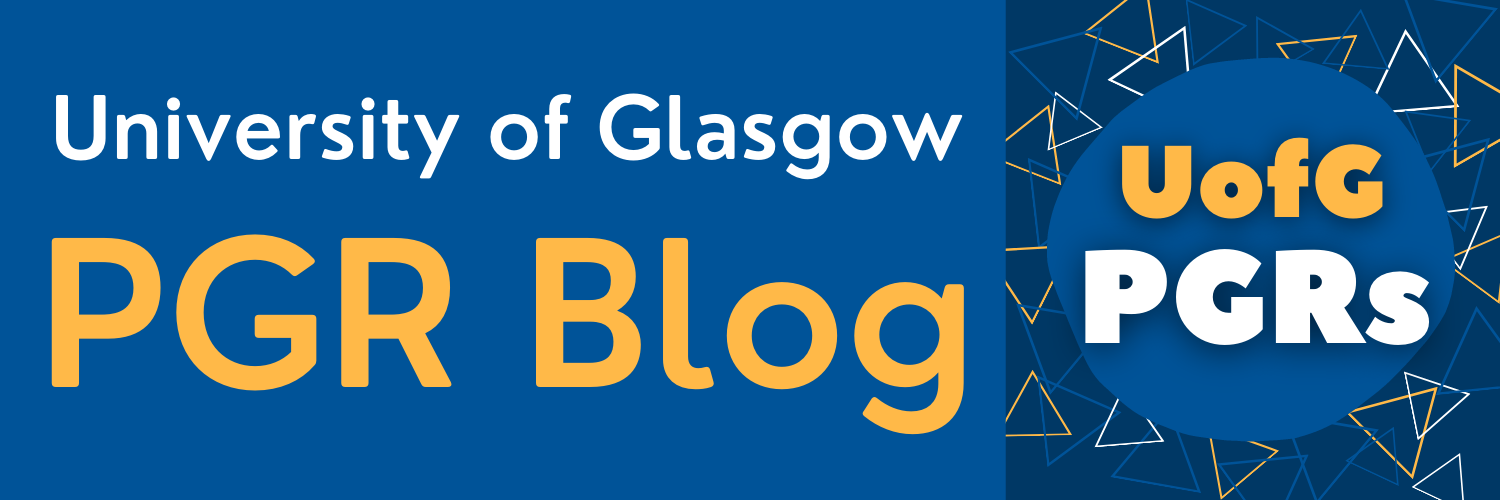Appliance Science: Physics with Your Microwave
Morag Williams is a University of Glasgow PhD student in Physics, carrying out her research at CERN, Geneva. She is working on the CLIC project, testing detectors to be used in future particle physics colliders.
Morag attended our Distance PGRs event in October, and wowed Jennifer and Cia with her accounts of fun science experiments they could do in the PGR office. We loved the sound of Morag's experiments so much we asked her to share them in this guest post.
I am a physicist and when I tell people this I often get a similar reaction: “science is cool, but has nothing to do with me”. In this post, I hope to share that science can be part of your everyday life- whatever your discipline- with some fun experiments PGRs can do away from their desks. We’ll create a new state of matter and measure the speed of light, all with one piece of equipment most PGRs will have in their office or flat kitchens: the microwave.
Experiment one: Measuring the speed of light with a chocolate bar
You will need: a microwave, a large bar of chocolate, and a plate.
Microwaves travel at the speed of light, as do radio waves, X-rays, and visible light. The difference between them is the wavelength and frequency: the distance between two wave peaks, and how many oscillations the wave does in 1 second. This is shown visually in the diagram below. The speed of the wave is constant, which is the frequency and the wavelength multiplied together.
Image (C) Your Dictionary, 2017
Step 1) Remove the turn table out of the microwave.
Step 2) Place the plate upside down over the bottom of the microwave, so that it covers the rotating part.
Step 3) Lay the bar of chocolate flat in the microwave on the upside-down plate so the long side is facing you.
Step 4) Turn on the microwave and heat until the chocolate bar starts to melt in some spots. It’s worth checking it every 4-5 seconds, but don’t move the chocolate bar from its position.
You should find that the chocolate melts only in spots, and you can see my results below. Measure the distance between the centres of two spots and double it, and this is the wavelength of the microwave. I got around 5.8 cm for mine, so a wavelength of 11.6cm for my microwaves.
Image (C) Morag Williams
On the back of the microwave there should be a number with the unit MHz (million cycles per second). This is the frequency of the wave, my microwave has a frequency of 2450MHz.
Image (C) Morag Williams
Pop these numbers in the equation below, where the factor of 10000 is to make the units correct. And there you have your measurement of the speed of light. The accepted value for the speed of light is 299 792 458 meters per second. I got 11.6 x 2450 x 10000 = 284 200 000 m per s. How close did you get?
I obtained a version of this experiment using bread from The Naked Scientist, where you can find a full explanation of the science behind this experiment. The chocolate experiment was obtained from the New Scientist book “How to Fossilise Your Hamster: And Other Amazing Experiments For The Armchair Scientist”.
Experiment two: Making plasma
You will need a microwave, a few grapes, a knife, and a tissue/paper towel.
If you ask people how many states of matter there are, most will say three: solid, liquid and gas. However, there are many more. One of these extra states is a plasma: a state comprised of lots of moving charges. It is the most common state of matter in the Universe. It is naturally found in stars, but it can be found closer to home too as lightning and fluorescent bulbs contain plasmas.
Stars are hard to come by, but it’s possible to create plasma in the kitchen using grapes.
Step 1) Cut the grapes in half, but not all the way through so that a piece of grape skin is still connecting the two halves together.
Step 2) Dry the grapes a little with the paper towel to absorb some of the juice. If needed, pull the grape halves apart gently so there’s a couple of millimetres of skin as a bridge.
Step 3) Place the grapes in the microwave (not in the centre of the turn table, without the paper towel) and heat for at most 10 seconds.
Image (C) Morag Williams
You should see some yellow sparks between the halves of the grapes and a strange crackling noise. This is your plasma forming! I left my grapes in for 8 seconds, and saw flashes around 3-4 seconds.
Image (C) Morag Williams
I obtained this experiment from The Naked Scientist where you can find a detailed explanation of the science behind it.
I hope you enjoy your first adventures into microwave science! Let us know if your experiments are successful, or share your ideas for future fun things to do on your lunch breaks with your fellow PGRs by tweeting us or sharing photos on Instagram- just tag @UofG_PGRblog, or tell us via the comments. We can’t wait to hear how you get on!








